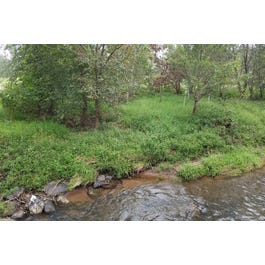
[ad_1]
The First Investigation of Stream Well being (FISH) software is a enjoyable and straightforward means for people, households, volunteer teams, youth, and adults to discover a stream and monitor modifications over time. The software guides you thru observations of assorted stream well being indicators like water readability, development of crops, and indicators of wildlife.
The FISH protocol and recording instruments not too long ago underwent a significant overhaul. Customers can now monitor extra details about their stream in a extra user-friendly software and with extra useful assets to information the method. Whether or not you’ve got heard about FISH earlier than or that is model new to you, now’s the proper time to check out this easy and enjoyable stream exploration exercise!
Penn State Extension and the Penn State Agriculture and Setting Middle developed the First Investigation of Stream Well being (FISH) Protocol as a citizen science monitoring protocol to not solely assess habitat however to additionally present the chance to file info on the organisms dwelling in and across the stream to get a fuller image of stream well being.
FISH works finest at present or potential/future stream restoration websites (riparian buffer planting, stream financial institution fencing set up, reside staking, and so on.) and when the positioning is monitored over time. Used on this means, the software can assist you monitor constructive or adverse modifications over time and present you ways streams react to completely different actions taken on the encompassing panorama.
For those who do not wish to monitor a stream over time, FISH can be utilized simply as soon as to information your nature expertise, to determine a baseline sense of stream well being, or to show others about visible stream well being indicators.
Whereas all it is advisable get began is on the market on the Penn State Extension web site, a webinar was additionally held not too long ago, and the recording is on the market to observe and be taught all about this revamped stream monitoring software.
[ad_2]
Supply hyperlink







